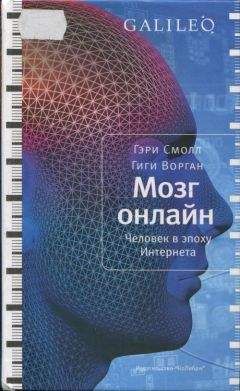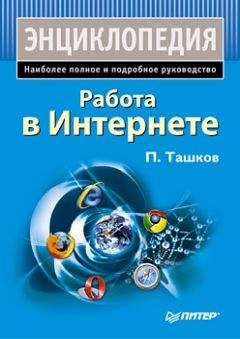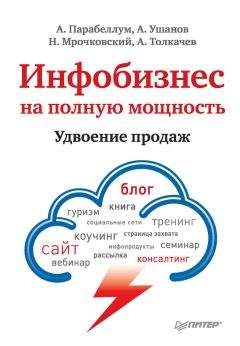Гэри Смолл - Мозг онлайн. Человек в эпоху Интернета

Скачивание начинается... Если скачивание не началось автоматически, пожалуйста нажмите на эту ссылку.
Жалоба
Напишите нам, и мы в срочном порядке примем меры.
Описание книги "Мозг онлайн. Человек в эпоху Интернета"
Описание и краткое содержание "Мозг онлайн. Человек в эпоху Интернета" читать бесплатно онлайн.
Сегодня мы уже не можем себе представить жизнь без компьютеров и Интернета. Каждый день возникают все новые и новые гаджеты, которые во многом определяют наше существование — нашу работу, отдых, общение с друзьями. Меняются наши реакции, образ мышления. Известный американский психиатр, профессор Лос-Анджелесского университета и директор Научного центра по проблемам старения Гэри Смолл вместе со своим соавтором (и женой) Гиги Ворган утверждают: мы наблюдаем настоящий эволюционный скачок, и произошел он всего за пару-тройку десятилетий!
В этой непростой ситуации, говорят авторы, перед всем человечеством встает трудная задача: остаться людьми, не превратившись в придаток компьютера, и не разучиться сопереживать, общаться, любить…
148. Allison S. E., von Wahlde L., Shockley Т., Gabbard G. O. The development of the self in the era of the Internet and roleplaying fantasy games. American Journal of Psychiatry 2006; 163:381-385
Глава 5. Хай-тек культура в обществе, политике и экономике149. Samuelson R. J. The vanishing greenback. Newsweek. June 25, 2007
150. Horrigan J., Rainie L. The Internet’s growing role in life’s major moments. Pew Internet & American Life Project. April 19, 2006, www.pewinternet.org/PPF/r/181/reportdisplay.asp
151. Anderson C. The Long Tail: Why the Future of Business Is Selling Less of More. Hyperion, New York, 2006
152. Born С., Meindl Т., Poeppel E., et al. Brand perception: Evaluation of cortical activation using fMRI. Annual Meeting of the Radiological Society of North America November 28, 2006, http://rsna2006.rsna.org/rsna2006/V2006/conference/event_display.cfm?em_id=4429416
153. Andrew Keen describes the negative cultural impact:
Keen A. The Cult of the Amateur: How Today’s Internet is Killing our Culture. Doubleday, New York, 2007
154. www.alexa.com/site/ds/top_sites?cc=US&ts_mode=country&lang=none
155. Netcraft.com, http://news.netcraft.com/archives/web_server_survey.html
156. Gomes L What are Web surfers seeking? Well, it’s just what you’d think. The Wall Street Journal. August 16, 2006
157. Arrington M. Yahoo top searches 2007: Please, people, stop typing Britney Spears into search boxes. TechCrunch. December 3, 2007. www.techcrunch.com/2007/12/03/yahoo-top-searches-2007-please-people-stop-typing-britney-spears-into-search-boxes/
Arrington M. Google announces fastest growing search terms. TechCrunch. December 3, 2007. www.techcrunch.com/2007/12/03/google-announces-fastest-growing-search-terms
Mills E. Ask.com’s top 10 has Google, but no Britney. CNet News.com. December 14, 2007. Avalable online: www.news.com/8301-10784_3-9834449-7.html
158. 2005 Online Holiday Shopping Update. November 27, 2005, www.comscore.com/press/release.asp?-press=683
159. Lenhart L Selling items online. Pew Internet & American Life Project. November, 2005, www.pewinternet.org/pdfs/PIP_SellingOnline_Novo5.pdf
160. Know N. Home shoppers do their hunting online. USA Today. February 9, 2007
161. Knutson R, Rick S., Wimmer G. E., Prelec D., Loewenstein G. Neural predictors of purchases. Neuron 2007; 53:147-156
162. Lohr S. Study says computers give big boosts to productivity. The New York Times. March 13, 2007.
163. Samuelson R. J. The vanishing greenback. Newsweek. June 25, 2007.
164. Naik G. Faltering family MDs get technology lifeline. The Wall Street Journal. February 26, 2007.
165. Duhigg C. Hospital clients nurture firm's scheduling software. Los Angeles Times. June 21, 2006.
166. Interactive Marketing & Media Fact Pack 2006. Crain Communications Inc. April 17, 2006, http://adage.com/images/random/Interactivefactpacko6.pdf
167. Darlin D. Using the Web to get the boss to pay more. The New York Times. March 3, 2007
168. Atkinson R. D., McKay A. Digital prosperity: Understanding the economic benefits of the information technolog у revolution. The Information Technology & Innovation Foundation. March 2007, http://www.itif.org/files/digital_prosperity.pdf
169. Kuhnen C. M., Knutson B. The neural basis of financial risk taking. Neuron 2005; 47:763-770
170. Hsu М., Bhatt М., Adolphs R., Tranel D., Camerer C. F. Neural systems responding to degrees of uncertainty in human decision-making. Science 2005; 310: 1680-1683
171. NAA releases ABC FAX-FAX analysis, www.naa.org/Global/PressCenter/2006/NAA-RELEASES-ABC-FAS-FAXANALYSIS.aspx?lg=naaorg
172. Carr D. Threatened by the Internet, Time Magazine slims down. The New York Times. January 8, 2007
173. Ciepły M. New show to begin on MySpace. The New York Times. September 13, 2007
174. Online ad revenue sets record for a third year. The Wall Street Journal. March 8, 2007
175. Kehaulani Goo S. Google gambles on Web video. The Washington Post. October 10, 2006, http://www.washington-post.com/wp-dyn/content/article/2006/10/09/AR2006100900546.html
176. Fallows D. How men and women use the Internet. Pew Internet & American Life Project. Washington, DC, 2005.
177. Baron-Cohen S., Knickmeyer R. C., Belmonte M. K. Sex differences in the brain: Implications for explaining autism. Science 2005; 4:310:819-823
178. Haier R. J., Jung R. E., Yeo R. A., Head K., Alkire M. T. The neuroanatomy of general intelligence: sex matters. Neuroimage 2005; 25:320–327.
179. Fallows D. How men and women use the Internet. Pew Internet & American Life Project. Washington, DC, 2005
180. The mismeasure of woman. The Economist. August 3, 2006, www.economist.com/science/displaystory.cfm?story_id=7245949
181. Fulkerson J.A., Story М., Mellin A., Leffert N.. Neumark-Sztainer D., French S. A. Family dinner meal frequency and adolescent development: Relationships with developmental assets and high-risk behaviors. Journal of Adolescent Health 2006; 39:337-345
182. Madden М., Lenhart A. Online dating. Pew Internet & American Life Project. March 5, 2006, www.pewinternet.org/pdfs/PIP_Online_Dating.pdf
183. Zaslow J. Digital love letters are easy to send but hard to cherish. The Wall Street Journal. February 9, 2007
184. Fisher H. E., Aron A., Brown L. L. Romantic love: A mammalian brain system for mate choice. Philosophical Transactions of the Royal Society of London. Series B. Biological Sciences 2006: 361: 2173-2186
185. Hafner K. Laptop slides into bed in love triangle. The New York Times. August 24, 2006.
186. Zeller T. Your life as an open book. The New York Times. August 12, 2006.
187. National Center for Health Statistics. Electronic medical record use by office-based physicians: United States, 2005, www.cdc.gov/nchs/products/pubs/pubd/hestats/electronic/electronic.htm
188. Stone J. H. Communication between physicians and patients in the era of e-medicine. The New England Journal of Medicine, 2007; 356:2451-2454
189. Dell К., Cullen LT. Snooping bosses. Time. September 11, 2006, http://www.workrights.org/in_the_news/in_the_news_time.html
190. Geller A. Bosses keep sharp eye on mobile workers via GPS. Associated Press. January 3, 2005, http://www.workrights.org/in_the_news/in_the_news_associatedpress.html
191. Finder A. For some, online persona undermines a resume. The New York Times. June 11, 206
192. Cohen R. Online extracurriculars. The New York Times Sunday Magazine. March 11, 2007
193. Sullivan M.S. Law May Curb Cellphone Camera Use. PCWorld.com. July 23, 2004, www.pcworld.com/article/id,117035-page,1/article.html
194. Bryan-Low C. To catch crooks in cyberspace, FBI goes global. The Wall Street Journal. November 21, 2006
195. Meyer J. Extremists are homing in on the Internet, says Gonzales. Los Angeles Times. August 17, 2006
196. Bloom F. E., Beal M. F., Kupfer D. J. (eds). The Dana Guide to Brain Health. The Dana Press. New York, 2003
197. Nitschke J. B., Sarinopoulos I., Mackiewicz K. L, Schaefer H. S., Davidson R. J. Functional neuroanatomy of aversion and its anticipation. Neuroimage 2006; 29:106-116
198. Cohen L. P. Internet’s ubiquity multiplies venues to try web crimes. The Wall Street Journal. February 12, 2007
199. Bryan-Low С. To catch crooks in cyberspace, FBI goes global. The Wall Street Journal. November 21, 2006
200. Yuan L Murder, she texted: Wireless messaging used to fight crime. The Wall Street Journal. July 2, 2007
201. Saranow J. The minutes of our lives. The Wall Street Journal. March 2, 2007
202. Lenhart A., Fox S. Bloggers: A portrait of the internet’s new storytellers. Pew Internet & American Life Project. Washington, DC, 2006
203. Studios enlist blowers for Oscar campaigns, ruffling feathers in Hollywood hierarchy. The Wall Street Journal. February 8, 2007
204. Nagourney A. Politics faces sweeping change via the Web. The New York Times. April 2, 2006. www.workrights.org/in_the_news/in_the_news_associatedpress.html
Schatz A. Candidates find a new stump in the blogosphere. The Wall Street Journal. February 14, 2007
205. Comscore.com. Social networking sites continue to attract record numbers as MySpace.com surpasses 50 million U.S. visitors in May. June 15, 2006, www.comscore.com/press/release.asp?press=906
206. Noveck J. YouTube follows the campaign trail. Los Angeles Times. July 6, 2007
207. The Internet’s broader role in Campaign 2008. Pew Internet & American Life Project. January 11, 2008. http://pewresearch.org/pubs/689/the-internetsbroader-role-in-campaign-2008
208. PQ Media’s Po litical Media Buying 2008: Preliminary Forecast Analysis. http://www.pqmedia.com/political-media-buying-2008.html
209. Amodio D. M., Jost J. T., Master S. L, Yee C. M. Neurocognitive correlates of liberalism and conservatism. Nature Neuroscience 2007; 10: 1246-1247
210. Kaplan J. T., Freedman J., Iacoboni M. Us versus them: political attitudes and party affiliation influence neural response to faces of presidential candidates. Neuropsychologia 2007; 45:55-64
Глава 6. Эволюция мозга: где мы теперь?211. Ercoli LM, Siddarth Р, Huang S-C, et al. Perceived loss of memory ability and cerebral metabolic decline in persons with the apolipoprotein E-4 genetic risk for Alzheimer’s disease. Archives of General Psychiatry 2006; 63:442-448
Глава 7. Снова лицом к лицу212. Silverstein S. Real world 101: Colleges teach dining, taxes, life. Los Angeles Times. June 10, 2006
213. Ybarra O., Burnstein E., Winkielmon P., et al. Mental exercising through simple socializing: Social interaction promotes general cognitive functioning. Personality and Social Psycholog у Bulletin 2008; 34:248-59
214. Chayer C., Freedman M. Frontal lobe functions. Current Neurolog y and Neuroscience Reports 2001; 1:547.
215. Blakeslee S. A small part of the brain, and its profound effects. The New York Times. February 6, 2007
216. Naqvi N.H., Rudrauf D., Damasio H., Bechara A. Damage to the insula disrupts addiction to cigarette smoking. Science 2007; 315: 531–534.
217. Koenigs М., Young L, Adolphs R., et al. Damage to the prefrontal cortex increases utilitarian moral judgments. Nature 2007; 446:865-866
Carey B. Brain injury said to affect moral choices. The New York Times. March 22, 2007
218. King J. A., Blair J. R., Mitchell D. G. X, Dolan R. J., Burgess N. Doing the right thing: A common neural circuit for appropriate violent or compassionate behavior. Neuroimage 2006; 30:1069-1076
219. Williams L. M., Brown K. J., Palmer D., et al. The mellow years?: Neural basis of improving emotional stability over age. Journal of Neuroscience 2006; 26:6422-6430
220. Begley S. Parts of brain seem to get better with age. The Wall Street Journal. February 17, 2007
221. The teen driver: Committee on Injury, Violence, and Poison Prevention and Committee on Adolescence. Pediatrics 2006; 118:2570-2581
222. Centers for Disease Control and Prevention. Webbased Injury Statistics Query and Reporting System (WISQARS) [Online]. (2006). National Center for Injury Prevention and Control, Centers for Disease Control and Prevention (producer), www.cdc.gov/ncipc/wisqars
223. Williams et al. Journal of Neuroscience 2006: 26: 6422-6430
224. Leclerc C. M., Hess Т. M. Age differences in the bases for social judgments: Tests of a social expertise perspective. Experimental Aging Research 2007; 33:95-120
Begley S. The upside of aging. The Wall Street Journal. February 17, 2007.
225. Foreman J. It seems all those birthdays may be making you happy. Los Angeles Times. July 16, 2007
226. Bradley S. Foregrounding language. On the relationship between therapeutic words and the brain. Psychiatric Annals 2006; 36:289-294
Schwartz J.M., Stoessel P.W., Baxter L. R., Martin K. M., Phelps M. E. Systemic changes in cerebral glucose metabolic rate after successful behavior modification treatment of obsessive-compulsive disorder. Archives of General Psychiatry 1996; 53:109-113
227. Koezuka N.. Koo М., Allison K. R., et al. The relationship between sedentary activities and physical inactivity among adolescents: Results from the Canadian community health survey. Journal of Adolescent Health 2006; 39:515-522
228. Small et al. American Journal of Geriatric Psychiatry 2006; 14:538-545
229. Small G., Vorgan G. The Longevity Bible. Hyperion, New York, 2006. Begley S. How to keep your aging brain fi t: Aerobics. The Wall Street Journal. November 16, 2006
230. Wang A. T., Lee S.S., Sigman М., Dapretto M. Reading affect in the face and voice. Neural correlates of interpreting communicative intent in children and adolescents with autism spectrum disorders. Archives of General Psychiatry 2007; 64:698-708
231. Joinson A. N. Selfesteem, interpersonal risk, and preference for e-mail to face-to-face communication. CyberPsychology & Behavior 2004; 7:472-478
232. Joinson A. N. Cyberpsychology & Behavior 2004; 7:472-478
233. Suler J. The online disinhibition effect. Cyber-Psychology & Behavior 2004; 7:321-326
234. Harmon A. Internet gives teenage bullies weapons to wound from afar. The New York Times. August 26, 2004
235. New A. S., Hazlett E. A., Buchsbaum M. S., et al. Blunted prefrontal cortical 18fluorodeoxyglucose positron emission tomography response to metachlorophenylpiperazine in impulsive aggression. Arch Gen Psychiatry 2002; 59:621-629
Подписывайтесь на наши страницы в социальных сетях.
Будьте в курсе последних книжных новинок, комментируйте, обсуждайте. Мы ждём Вас!
Похожие книги на "Мозг онлайн. Человек в эпоху Интернета"
Книги похожие на "Мозг онлайн. Человек в эпоху Интернета" читать онлайн или скачать бесплатно полные версии.
Мы рекомендуем Вам зарегистрироваться либо войти на сайт под своим именем.
Отзывы о "Гэри Смолл - Мозг онлайн. Человек в эпоху Интернета"
Отзывы читателей о книге "Мозг онлайн. Человек в эпоху Интернета", комментарии и мнения людей о произведении.




























